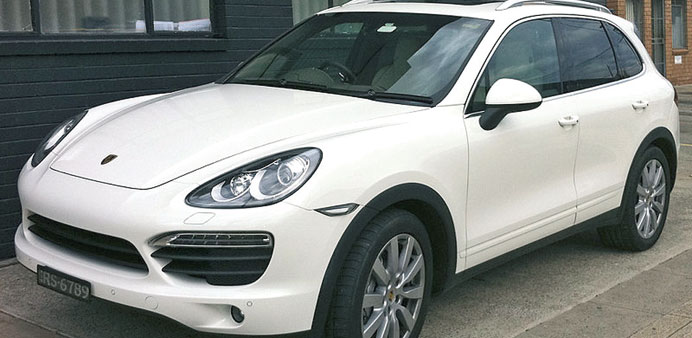DPA/Phnom Penh
The wizened cyclo driver, cigarette in mouth, muscles taut from pedalling up and down French-style boulevards, is one of Indochina’s enduring romantic images.
But cyclos on the streets of Phnom Penh are now outnumbered by another means of transport: the luxury car.
While Cambodia is still one of the poorest nations in Asia, with one-third of the population living on less than a dollar a day, it has seen rapid economic growth. Nowhere are the beneficiaries of that newfound wealth more evident than on the streets of the capital.
The 4x4s with black-tinted windows have long been the vehicle of choice for the country’s nouveau riche, but a new and even more prestigious brand is coming to town: Porsche.
“When I arrived here I was amazed at the cars. My expectations were motorcycles - I was shocked when I saw the amount of luxury vehicles on the road,” said Graeme Hunter, general manager of Lei Shing Hong Limited, a Hong Kong-based company bringing the Porsche brand to Cambodia. “Let’s not get away from it, it’s not a wealthy country and there are a lot of poor people.”
But with the urban elite’s growing fixation with brand-name cars, Porsche is confident that there’s a market, and it aims to cater to Cambodian tastes and terrain.
“The main volume model here will be the Cayenne sporting SUV, just because it’s most suited to the environment here in terms of the roads,” Hunter said of potholed city streets and rougher off-road dirt tracks in the rural areas.
“You look around and you see the preference here for luxury vehicles is definitely sporting SUVs - you see a lot of Range Rovers - compared to traditional saloons.”
Hunter concedes that the brand’s signature model is the sleek, racy Porsche 911, but he said the environment doesn’t lend itself well to sports cars. Unlike in Europe, where one might take a Porsche for a spin in the countryside to really feel the speed, in Cambodia the country roads are too rough.
“Definitely the Cayenne can go anywhere, it can go off-road,” Hunter said.
A new showroom to be built this year will have some 911 and Panamera models, as well as a new model called the Macan - a smaller version of the Cayenne.
Finn Viggo Gundersen, general manager of Land Rover distributor Envotech, said he welcomed the competition, but noted that one challenge the German brand would also face is the fact that many Cambodians purchase their cars on the “grey market.”“We don’t sell many cars because of the grey market,” Gundersen said, explaining that there are few protections in place for authorised dealerships. “We only sold 12 cars in 2012 but we saw 300 Land Rovers come in on the grey market.”
“Today there are a lot of high-end cars ... It’s coming from a middle class that we never had before,” said Gundersen, who has lived in Phnom Penh for more than 20 years. “And they have money. People buy a new car and then upgrade the next year.”
Hunter agreed that the grey market dominates, with only about 10% of the 250,000 cars imported each year coming through official channels, but said he is not too concerned.
“At the end of the day, if you’ve got the money ... people generally want the real deal, they don’t want the fake,” he said.
Phnom Penh has seen rapid development in recent years, but there are still relatively few international brands. No Starbucks and no McDonalds, though Burger King has recently arrived.
The price tag of a Porsche ranges between about $110,000-150,000, in a country where teachers earn a monthly salary of only $100.
However, Porsche believes that those with the means will buy its products.
Its dealerships in neighbouring communist Vietnam struggled during the economic crisis but the outlook for this year seems positive, said Hunter, who also recently travelled to Myanmar to scope out the potential as that country opens up.
Hunter said he thinks Myanmar has serious potential for the future, but for now Cambodia’s nouveau riche are the target market. “People buy these as symbols - it’s showing off your wealth on the street,” he said.

